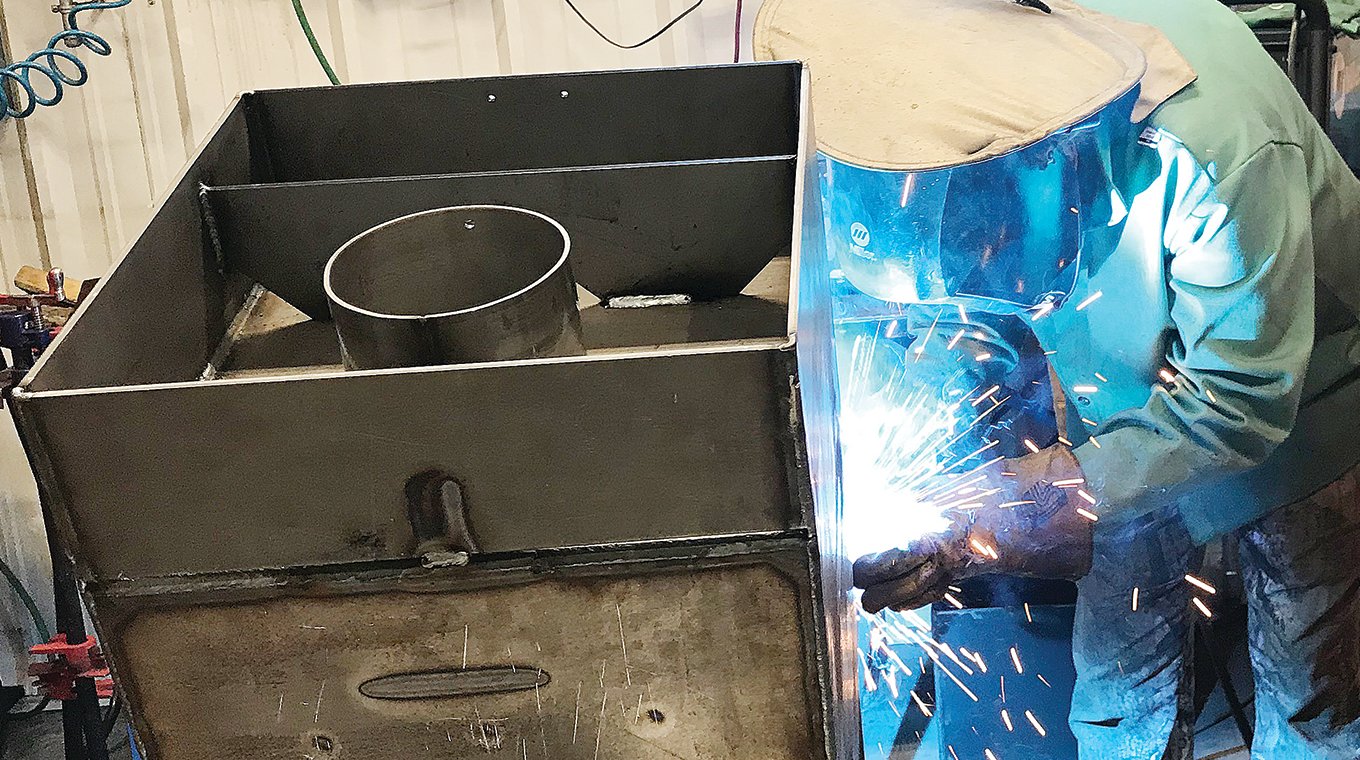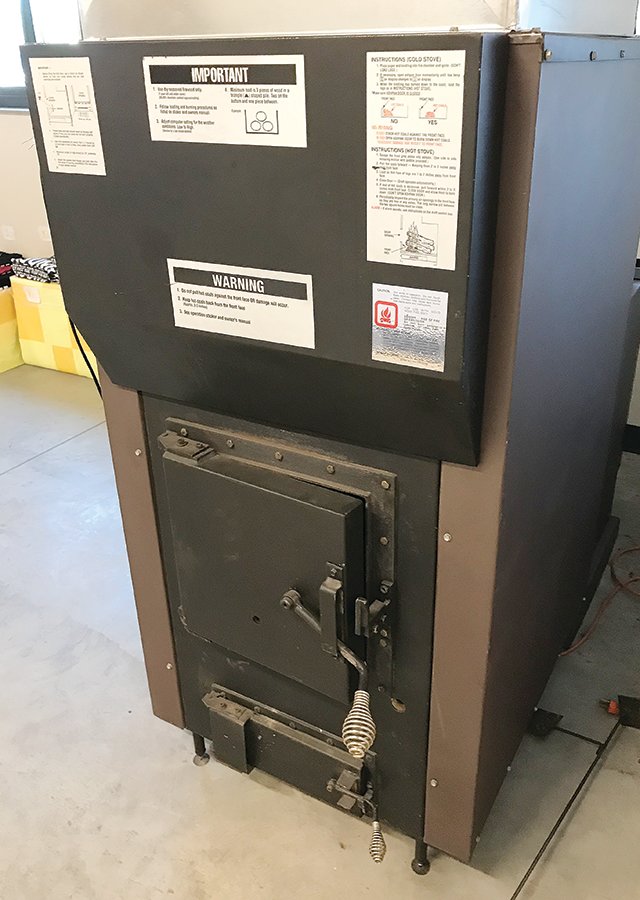Support the Timberjay by making a donation.
Lamppa waits for EPA action
Testing errors allowed competitor to obtain coveted certification
TOWER—With the start of the heating season now just weeks away, the phones are busy here at Lamppa Manufacturing, which makes and sells the cleanest-burning wood furnace in North America. But the phones should be ringing a lot faster, and that’s become a source of friction between the company and the federal Environmental Protection Agency, which is supposed to enforce laws and rules intended to keep the air clean.
That objective was the motivating force behind an Obama-era push to clean up wood furnaces, which were frequently responsible for poor air quality in many communities, particularly in the West, during the winter months. The fine particulates emitted by the wood-burning devices were contributing to a wide range of respiratory ailments in those communities and, in response, the Obama administration had promulgated new rules that required wood furnace manufacturers to dramatically reduce the emissions of their products or cease selling them in the U.S. market.
The strictest rules took effect in 2020 and, to date, Lamppa Manufacturing is the only furnace maker in the world to have indisputably met the standard, with its Kuuma Vapor Fire 100. The furnace not only met the rule— it beat the emissions standard by 40 percent.
Under the rules, that should have given Lamppa Manufacturing a literal corner on the market for new wood furnaces sold in the U.S. heading into the 2020 heating season. That expectation was part of the company’s justification for its recent move into a new, much larger manufacturing facility and the hiring of additional workers. And while business has been good, due mostly to strong sales of the company’s famed sauna stoves, wood furnace sales have lagged expectations. That’s because the Trump administration has been slow to enforce the new rules for furnaces or clamp down on a Missouri manufacturer that claims to have met the new standards, even though federal officials now dispute that claim.
The company, known as Hy-C, insists that testing by Intertek labs confirms that its Fire Chief FC1000E and Shelter SF1000E wood furnaces have met the EPA’s 2020 rules for emissions, and is prominently touting that claim as it continues to sell its product through major retailers. With a price tag that’s less than half the cost of a Kuuma Vapor Fire furnace, the rival company’s continued sale of its product as compliant with EPA rules has become a source of considerable irritation for representatives of Lamppa Manufacturing.
EPA: Testing may have been invalid
While the EPA did issue Hy-C a 2020 certificate for its Fire Chief and Shelter branded wood furnaces, federal officials have known for months that there were irregularities in the testing procedure under which the company received the federal agency’s imprimatur. In fact, in a March 25, 2020 memo, Steffan Johnson, Measurement Technology Group leader with the EPA’s Air Quality Assessment Division, recommends that three of the four required tests that Hy-C claims met the 2020 EPA standard be invalidated due to those irregularities.
In some cases, the manufacturer and the testing lab operated the Hy-C furnaces contrary to the parameters set forth in the federal rules, which may have allowed the furnaces to appear to burn cleaner than they likely would under conditions in a typical home. In several cases, the testing lab operated the Hy-C furnaces based on directions provided by the manufacturer, even though those directions were contrary to the testing guidelines set out by the EPA. Yet, nearly five months later, Hy-C is continuing to advertise its wood furnaces as compliant and representatives of Lamppa Manufacturing are increasingly frustrated that the EPA has failed to take steps to stop Hy-C from making claims that their own testing does not appear to support.
“It’s definitely having an impact, especially this heating season,” said Garrett Lamppa, who handles much of the marketing for the company, owned by his father Daryl Lamppa. “The problem the EPA has is they certified these things a year ago, even though they only passed one of the four test burns,” said Garrett. “If the American Lung Association or these other manufacturers who haven’t been certified knew about this, they’d be up in arms.”
In a June 30 email, EPA’s Johnson puts the onus for the improper testing described in the March 25 memo on the company and the testing lab. “Some of what lies within this document is the responsibility of the manufacturer, some of it the lab should have taken steps to avoid,” wrote Johnson responding to questions from Lamppa Manufacturing owner Daryl Lamppa and plant manager Dale Horihan.
Part of the problem, according to Garrett Lamppa, may be a lack of expertise on the part of the EPA officials overseeing the certification process. The competing furnaces ended up with certification, says Garrett, because the staff at both the EPA and the testing lab didn’t catch the fact that the test burns had been done improperly. It was Daryl Lamppa, who is highly knowledgeable about the mechanics of wood-burning, who reviewed documentation of the testing and spotted the errors. He then alerted the EPA, prompting the agency to investigate.
Now, five months after the agency acknowledged testing errors that should invalidate three of the four test burns on the Hy-C furnaces, folks at Lamppa Manufacturing are looking to understand how their competitor can continue to sell its product as meeting the 2020 standard.
When contacted by the Timberjay, EPA officials insist they’re currently conducting an evaluation of the issue and will “determine any appropriate follow up actions,” although they declined to provide a timeline for when those actions might be undertaken.
The EPA is responsible for issuing certifications, as well as monitoring compliance with the provisions of its wood heater program. In a statement provided on background, agency officials note that “failure to comply with these requirements may result in a revocation of their certification and enforcement action, including penalties as specified under the Clean Air Act.”
That offers only limited comfort to Lamppa officials as the ramp-up to the heating season gets underway, with competing furnaces still for sale. “Those customers are buying these furnaces with the assumption that they’re getting something efficient and clean burning and they’re not,” said Garrett. “It passed because they didn’t test it correctly.”
Horihan, while concerned about the situation, is less convinced that Lamppa will lose large numbers of sales to its cheaper competitor. The Lamppa furnaces are built much heavier, as a high-quality, long-term investment and Horihan believes that puts their product in a higher end slot in the market.
“I think it will impact sales to some extent, we’re really selling to a different clientele for the most part,” he said.











